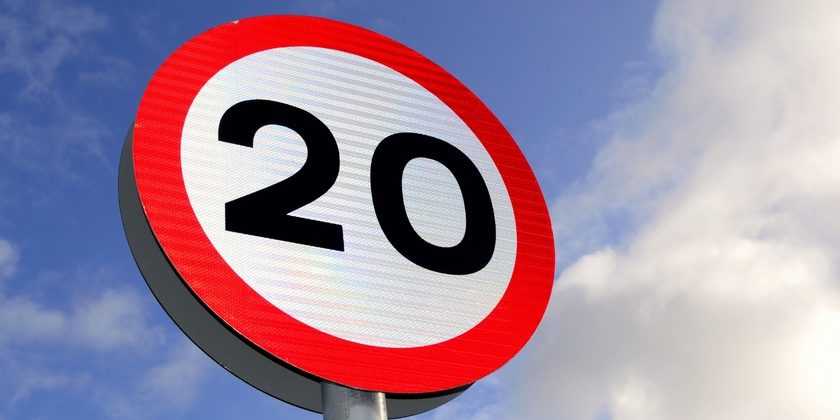Concerns raised by UK Statistics Authority’s regulatory arm over transparency of data on Wales’ 20-mph speed limit

The UK Statistics Authority’s regulatory arm has formally written to the Welsh Government, expressing concerns about the transparency level of data related to the newly implemented 20-mph speed limit on Wales’ restricted roads.
Wales became the first nation in the UK to roll out a default 20mph speed limit for residential roads.
This new limit came into force on all “restricted” roads on Sunday, 17th September.
The move has seen a massive backlash in Wales, with a petition calling for the new limit to be revoked and for roads to return to 30mph having gathered nearly half a million signatures.
Ahead on the speed limit coming into force, a promotional leaflet was circulated to all Welsh households which claimed 20mph zones would only add a minute to journey times.

In a detailed letter addressed to the Welsh Government, the Office for Statistics Regulation (OSR) pointed out the difficulties faced by the public in understanding the true impact of the speed limit change on journey times.
While citing data sources, the promotional leaflet was deemed insufficient in terms of clarity and accessibility.
The primary source cited in the leaflet was a June 2022 Explanatory Memorandum to the Restricted Roads (20 mph Speed Limit) (Wales) Order 2022.
This document, although comprehensive in detailing the economic impacts and rationale of the policy, was found to be too complex for an average reader to extract relevant data regarding journey times.
In his letter, Ed Humpherson, Director General for Regulation at the OSR, said:
“I am writing today to outline my concerns about the transparency of sources supporting claims on the implementation of the Welsh Government’s 20 mph speed limit, particularly in a promotional leaflet sent to households in Wales.”
“While the claims in the promotional material cited the sources for the figures quoted, I consider that improvements could have been made to aid transparency and better support users.”
“The source used for the claim that ‘most journeys will be around one minute longer’ was from a June 2022 Explanatory Memorandum to the Restricted Roads (20 mph Speed Limit) (Wales) Order 2022.”
“This document was a Regulatory Impact Assessment and sets out the likely economic costs and benefits for the then proposed legislation as well as the rationale for the proposal, objectives of the policy, and details how the policy will be monitored.”
“The document itself did include some high-level information on how the overall journey times increase was derived, and the uncertainty and limitations of the estimate were acknowledged.”
“I consider, however, that it would be challenging for a reader to unpick this detailed document to find and understand the data and calculations used to support this claim, and that it would not be reasonable to expect people who read the leaflet to do so.”
“In the course of engaging with your team on this matter, they helpfully shared a technical note on the journey time calculations within the Regulatory Impact Assessment. This more clearly sets how the claim was derived in a way that would allow scrutiny from readers, but this technical note was not publicly available for citizens to access.”
“In short, I do not consider that this analysis’s presentation in the leaflet fully aligns with our expectations for Intelligent Transparency.”
“I do recognise that other, more detailed data are available for people to understand the impact on journey time through the monitoring report from phase 1 of the 20mph trial and that Transport for Wales will be developing its plans for future reporting including an interim monitoring report expected in June 2024. I also understand you now intend to publish the technical note which I welcome.”
“To better support users in the future, I recommend that:
As part of planned monitoring, the Welsh Government and Transport for Wales should continue to review the evidence on journey times and cite the most appropriate evidence source when communicating the impact on journey times. Analyst teams in the Welsh Government should continue to support and work with communications and policy colleagues in the preparation and presentation of data and statistics. Transport for Wales, in conjunction with Welsh Government, should consider how it can make improvements to data and statistics on the implementation of the 20mph speed limit, including considering the accessibility of data and supporting information. Transport for Wales should seek feedback from users as it starts developing its new outputs.”
Spotted something? Got a story? Email: [email protected]
Latest News
